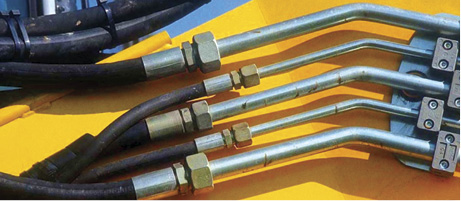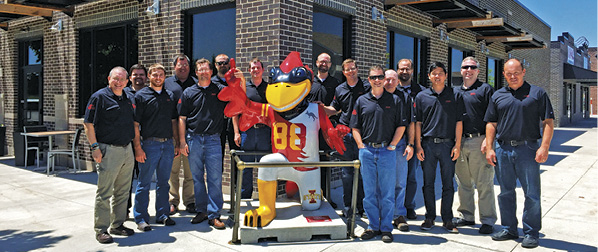High Efficiency Hydraulic Pump-Motors Employing Partial Stroke Piston Pressurization
This column will bring you the progress of the pre-competitive research being conducted at member universities that are part of the CCEFP network. This research will help give insight into the future direction of fluid power.
The Center for Compact and Efficient Fluid Power (CCEFP) holds a monthly forum, highlighting research, workforce, and special topic presentations.
CCEFP is a network of fluid-power-research laboratories, academic faculty, graduate and undergraduate students at nine universities. It is also a National Science Foundation Research Center. For more information on CCEFP, visit www.ccefp.org.
Since 2014, the National Fluid Power Association (NFPA) Foundation has supported and is helping to expand the pre-competitive fluid-power-research activities of the CCEFP, dramatically increasing the number of institutions and students impacted by its research program. For more on NFPA, visit www.nfpa.com/aboutnfpa/missionfocus.aspx.

Institution: University of Minnesota
PURPOSE
Most technology utilizing hydraulics involves pumps or motors. However, one of the challenges of hydraulic pump-motors is the issue of energy use when they are run at low output levels or low-displacement power. The Artemis Digital Displacement hydraulic pump has been the “gold standard” when it comes to offsetting low displacement with a high energy efficiency, but the device is expensive and not always the best option for specialized projects in the fluid power industry. The goal of Thomas Chase and his team is to develop an alternative to the Artemis device using hydro-mechanical control.
PROGRESS
The project includes the use of a two-stage process: the 2D rotary valve pilot stage and the spool valve main stage. The pilot stage employs a 2 degree-of-freedom valve that allows the user to adjust displacement, switching from pilot to tank pressure.
Typically with the use of a variable displacement swashplate, a piston is subjected to high pressure for the entire power stroke. But when utilizing the partial stroke piston pressurization (PSPP) model in the team’s new pump, the piston is subjected to high pressure for only a fraction of the power stroke. The spool translation changes the stroke, ideally reducing compressibility loss when the pump starts the stroke late and the motor ends the stroke early.
With the PSPP, the user sees a reduction in slipper friction and piston friction, plus the valve plate is completely eliminated. With lower displacement in a PSPP pump, the team expects to see a significant increase in efficiency as well as other system components requiring less use, e.g., cooling systems.
Because most hydraulic systems are run at partial power most of the time, having a pump that is extremely efficient even when running at low displacement is beneficial to a lot of applications in fluid power systems like on-road and off-road construction.
NEXT STEPS
When running the pump at about 0.27 displacement, the newly developed pump measures at approximately 55% efficiency. When the pump is running at 0.60 displacement, it measures at roughly 93% efficiency. With these results in mind, the team confirms they’re on the right track in developing the hydro-mechanical pump-motor that will lead to their final goal. However, despite the team’s satisfaction with the test efficiency rates, here are some of their plans to improve the efficiency going forward: fix the pilot line leakage, set the backlash timing with greater accuracy, and run the pump at a higher pressure rate. After adding these adjustments, the team can ultimately determine if the use of a PSPP and discrete piston control using mechanical valving will provide the results they anticipate.







